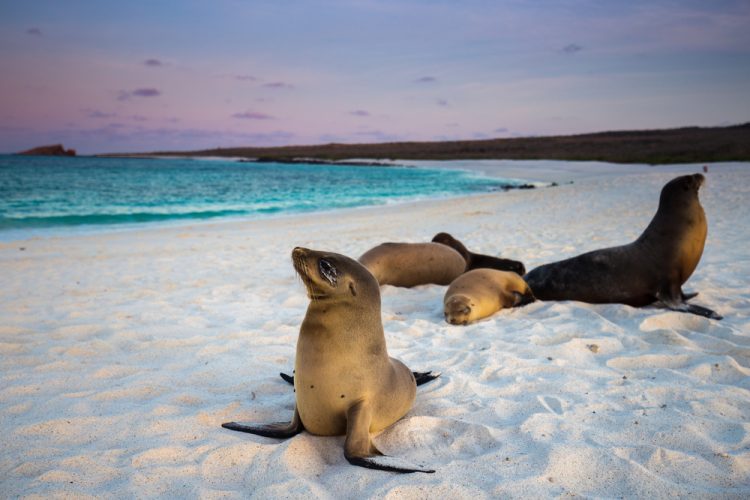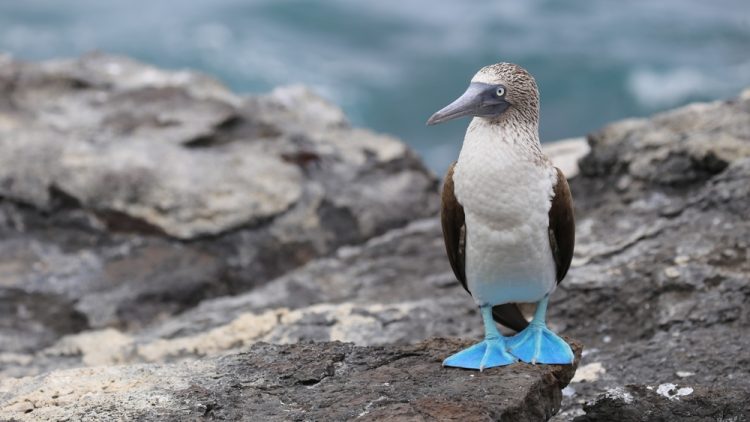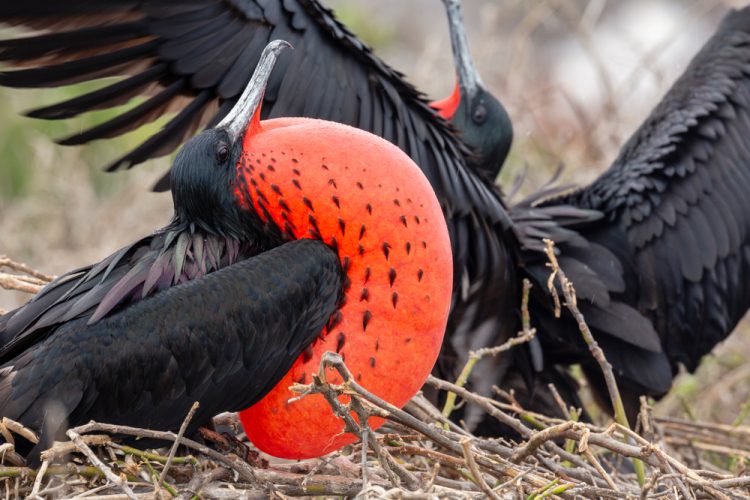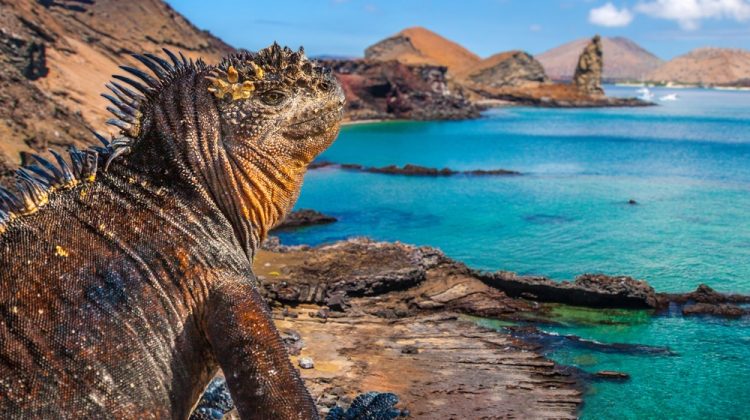On a planet where over-tourism is spoiling the very place you’ve gone to visit, it’s a rare treat to be far from the crowds and close to nature. A place where only a handful of other humans are swimming with baby sharks in the bay, or you’re the only person stepping around a dozen iguanas sunbathing on the pier. Where you and your friends are standing only a few feet from some barking, frolicking sea lions.
That’s the beauty of the Galapagos, a chain of volcanic islands famous for being the place where Charles Darwin developed his theory of evolution by observing how creatures had adapted to live on the different islands.

Of course, the luxury of seeing near-pristine nature comes at a price, but if you have the money, it’s well worth splashing out. These Pacific islands are about 600 miles west of Ecuador, and their isolation is what makes them so magical.
Sadly, the introduction of invasive plants and predatory animals is threatening about 150 native species with extinction, and the government and various non-profit organisations are working desperately to prevent their disappearance.

The most iconic islander is the giant tortoise, which comes in almost as many varieties as there are islands. Yet their numbers have dwindled due to predators such as rats, which eat their eggs, so two tortoise breeding centres are working to restore their numbers. One centre is attached to the excellent Charles Darwin Research Station on Santa Cruz Island. Here we witnessed a clash between two giant saddleback tortoises that saw one ending up helplessly wriggling on its back. Luckily, a strong guide was on hand to haul him upright. In the wild, the loser would have died within a couple of hours under the fierce equatorial sun.
Tortoise fans should also visit Rancho Primicias Reserve on Santa Cruz, where countless giant tortoise have made their home. They’re free to come and go, but the vegetation is ideal, so they stick around. It’s perfect for the owners, too, who traded the hard work of farming for the easier life of tourism. The guides also lead you through a lava tunnel – a relic from a volcanic eruption when lava on the surface cooled and solidified, but molten lava underneath kept running, eventually flowing out to leave a hollow tunnel.
Iguanas are the other most noticeable land animals on the islands, although the marine variety has taken to the sea. It’s just plain bizarre to spot an iguana swimming, but that’s another weird wonder of the Galapagos. Most of the wildlife here has no fear of humans, so you can get close without them fleeing. People are urged to keep a respectful distance, of course, but if the animal happens to wander up to you, that’s a bonus.
My most memorable up-close moment came when I was snorkelling in Concha de Perla lagoon off Isabela Island. A giant green turtle suddenly appeared and swam right up to me until we were face-to-face. It was a magical moment, and when her flipper brushed my hand, we dived down together, still touching. I stayed to watch her foraging for seagrass, her nose disturbing brightly coloured fish as she probed between the rocks.

The islands are also home to numerous unusual birds, like blue-footed boobies and Galapagos penguins, which enjoys these warmer waters. In Concha de Perla, I watched a pelican repeatedly divebomb the waves to catch fish, totally ignoring some snorkellers a few feet away. Then there was a flurry of action as a penguin broke through the surface, twisting and turning as it chased the same fish a pelican had its eye on. The penguin lunged but missed, the pelican swooped, and the fish disappeared inside the bird’s vast throat pouch.
My favorite birds were the frigates, elegant black seabirds that nest in low bushes. We took a boat trip to uninhabited Seymour Island during mating season, when the males inflate their red neck pouches to such ludicrous proportions that their beaks rest on their overblown bodies like old men sinking into pillows. Then they hang about in groups waiting for passing females to take their pick. We were so close that anywhere else they would have flown off in alarm, but these proud males just showed off their red throats for us as if they were trying to woo the humans, too.

For my Galapagos adventure, I chose a land-based trip, staying on Santa Cruz and Isabela Island. Another option is to stay on a catamaran and travel to different islands every day, but I wanted the freedom to explore at any time, not only when the boat drops you ashore. It was a great decision, allowing me to explore Puerto Ayora, the largest town on Santa Cruz, and Puerto Villamil on Isabela Island. They’re typical little seaside towns with a promenade of bars, restaurants, and souvenir shops. And the bonus of not too many tourists.
Fast Facts:
The Galapagos has 13 major islands, four of which are inhabited, and a fifth, Baltra, is the site of the main airport. About 97% of the land is protected as the Galapagos National Park.
Visitors fly in from Quito or Guayaquil in Ecuador and pay a $200 conservation fee on arrival.


